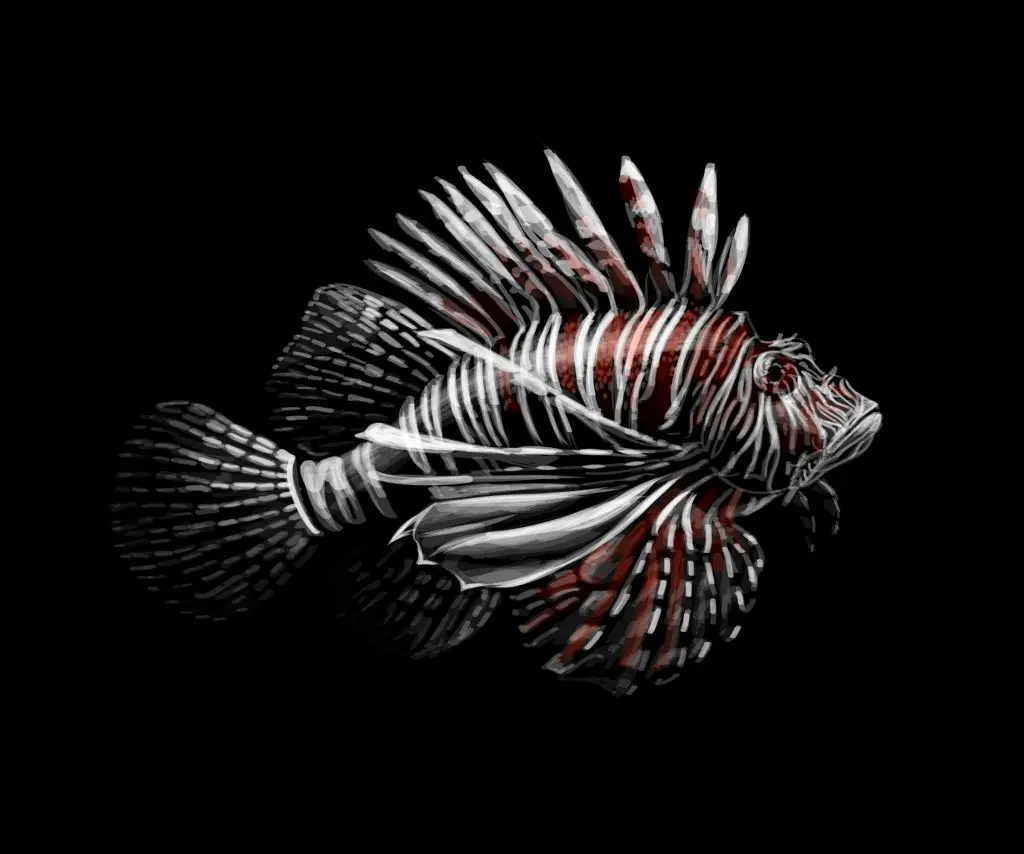Groupers are one of the known predators of lionfish. The skeletal remains of lionfish have previously been found in their stomach. They can drastically help in controlling the number of lionfish. That’s why they might be able to limit the invasion of lionfish.
Even though lionfish are quite beautiful, they are predators of small fishes, which are not good for controlling biodiversity. As the number of them has increased in some regions worldwide, especially the Caribbean, many have been concerned about the fish populations. During the past five years, the lionfish population has increased dramatically in the Caribbean region, causing harm to coral reefs, conservatism, and small fishes. Groupers are now being used by researchers to control their population.

Why Do Groupers Eat Lionfish?
Among the few predators of lionfish, groupers are one of them. Recently many divers have noticed groupers eating lionfish. You will most likely come across such videos if you search the internet, but the thing is, eating a lionfish is very tricky even for the predators.
VIDEO OF A GROUPER EATING A LIONFISH
Groupers usually struggle to swallow lionfish as it’s very tricky. If a diver has already speared the lionfish, it approaches the lionfish head-on. It does so that the spines are laid down when swallowed, but eating a live lionfish is trickier than when it’s dead. When being hunted by a predator, it will turn its head away and shoot all of its 18 venomous spines. When it ends up inside a predator’s mouth, those spines can cause a lot of damage and pack quite a punch.
What Is Lionfish?
Lionfish are a kind of carnivorous fish that are usually native to the Indo-Pacific region, but recently, they have become an issue in the Atlantic region. If you have never come across a lionfish, it is brown or maroon with white stripes covering its head and body. An adult lionfish can be as large as 18 inches, while baby ones are 1 inch or less. Scientists fear that this top predator is going to cause harm to the helpful species.
Why Are Lionfish a Problem?
Invasive lionfish are now threatening the native fish and its surrounding environment in the U.S. Atlantic coastal waters. Invasion species like lionfish can cause extinctions of native plants and animals, alter habitats, and reduce biodiversity. They were native to the Indo-Pacific but are now found along the southeast coast, in parts of the Gulf of Mexico and the Caribbean.
The main problem with the overpopulation of lionfish is the fact that it has the potential to harm reef ecosystems. It competes with overfished native stocks for food and space, which is an issue. Scientists predict that it may kill algae-eating parrotfish leading to seaweed overtaking the reef. There has been no stop to the continuous increase of the lionfish population due to the lack of predators and their year-long breeding process.
Another special characteristic of lionfish is that they have very venomous spines, which can be painful. Scientists are actively studying these fishes to know more about the potential threat that they might pose to biodiversity. Experts are trying to determine where to look for them by acquiring more knowledge about their habits and preferences in non-native water.
Where Did the Fish Come From?
Their origin has been previously mentioned, but their spread across the Atlantic is still a mystery. It is most likely that humans have provided a helping hand in this whole process. Experts speculate that some people might have dumped unwanted lionfish from the aquarium into the Atlantic Ocean. They wouldn’t have spread so much if they had some predators, but as they are not native to the Atlantic, there aren’t many predators here.
Unfortunately, researchers have confirmed that the lionfish population will continue to rise. They also added that they must opt for unconventional methods to eliminate them. Once marine invaders enter the territory, it’s nearly impossible to eradicate them completely.
Scientists have yet to discover how lionfish might fully affect the commercial fishing Industries and native fishes. All they know till now is that they can drastically affect ecosystem and fishing economics. So thorough research is running to find out their role and threat.
What Is the Solution?
After their mysterious invasion about thirty years ago, they have spread throughout the Atlantic, the Caribbean, and the Gulf of Mexico. They have caused havoc upon the ecosystems around the coast. Even though they are in a non-native habitat, a few predators have kept them in check. Even after that, they have voraciously expanded, gobbling up important species and other reef fishes.
Here are some of the best solutions to combat those invasive lionfish:
- Hunt Them: Hunting them through divers is a way to keep them in control. Even though it’s a very risky job for divers, many are already taking this into action.
- Eat Them: Many people have started eating lionfish because they taste similar to chicken. So, if you ever want to try it, go ahead.
- Train Sharks: If sharks are trained, then they can eat lionfish. It might sound bizarre, but it is a real thing.
- Stop Importing lionfish: As it has been speculated that their spread started from being dumped as it was unwanted for home aquariums, importing lionfish for aquariums should be banned.
- Smartphone App: There are also apps for divers to report sightings of any lionfish. So that might come in handy to locate them.
Conclusion
Lionfish can be controlled to a tee by groupers, but there’s not going to be a drastic change. Groupers easily swallow lionfish when dead but hurting live ones can be hard even for natural predators like them.












Pingback: Can Grouper Change Color? | Reel Fishing Guru
Pingback: What is a Potato Grouper? | Reel Fishing Guru